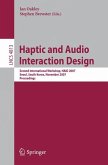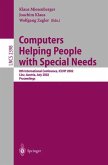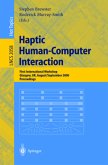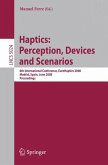Overview The International Workshop on Haptic and Audio Interaction Design was - ganized as part of the EPSRC-funded MultiVis project. The main focus of the workshop was to investigate how the modalities of sound and haptics (touch) could be used together in interaction, and what novel interfaces could be p- vided when they are used in conjunction. What are the relative advantages of each of the modalities when used alone and together? Are there reasons why haptic-based information is moreuseful in certain situations than equivalent - dio information? How can di?erent modalities be used together to create c- pelling and useful interaction with computer-based systems? We posed these questions to researchers around the world, asking them to submit novel work which sought to discover answers. Thirty papers were submitted of which 15 were accepted. Each paper was peer reviewed at least twice using an esteemed set of leading international ?gures from both academia and industry, to whom we are grateful for the quality of their reviews, time, patience and responding within our tight schedule. Thepaperspresentedattheworkshopcomefromawidevarietyofdisciplines ranging from psychology to art, showcasing how haptics and sound can improve user interaction with computers; challenging us to move beyond simple mouse and keyboard metaphors to produce interfaces for devices and applications that allow for the full range of human interactivity. Below the papers are categorized and summarized based on their application and focus.








